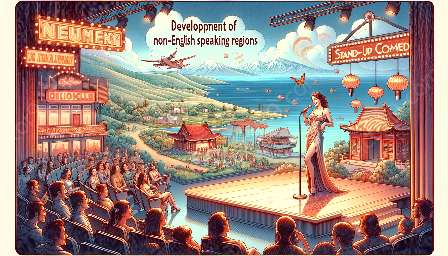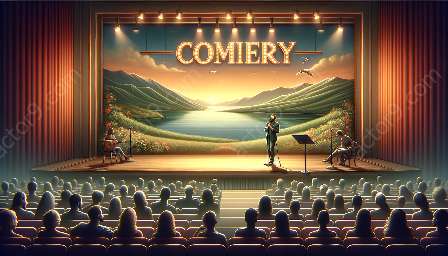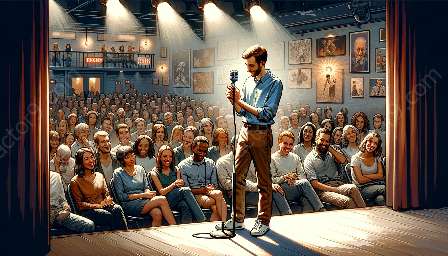Humor and satire are powerful tools that have been used throughout history to challenge societal norms, provoke thought, and bring people together. In the realm of stand-up comedy, exploring the boundaries of humor and satire takes on a unique and interactive form, engaging audiences in thought-provoking and entertaining ways. This topic cluster aims to delve into the profound impact of humor and satire, focusing on their interplay with stand-up comedy and audience interaction.
The Role of Satire and Humor
Satire and humor play a crucial role in shaping societal attitudes and addressing pressing issues. Satire, in particular, has a rich history of challenging authority, questioning social norms, and fostering critical thinking. It often involves the use of irony, exaggeration, and ridicule to highlight the flaws and absurdities of individuals, institutions, or societal customs.
Humor, on the other hand, serves as a universal language that transcends cultural and linguistic barriers. It has the remarkable ability to connect people and provide relief from life's challenges. When merged with satire, humor becomes a potent tool for addressing sensitive topics and engaging audiences in introspective conversations.
Stand-Up Comedy as a Platform for Exploring Boundaries
Stand-up comedy is an art form that thrives on pushing boundaries and challenging societal conventions. Comedians often use humor and satire to offer fresh perspectives on cultural, political, and social issues, inviting audiences to reconsider their preconceived notions and biases.
What sets stand-up comedy apart is its direct engagement with the audience. Unlike other forms of entertainment, stand-up comedy encourages audience interaction, creating an organic and dynamic exchange of ideas and laughter. This interaction allows comedians to gauge the audience's response to their content, adjust their delivery, and improvise based on the audience's feedback.
Understanding Audience Interaction
Audience interaction is a vital component of stand-up comedy. It provides an opportunity for comedians to connect with their audience on a personal level, creating a shared experience that resonates deeply. Through audience interaction, comedians can adapt their material on the fly, address current events, and even incorporate spontaneous moments of humor and satire based on the audience's reactions.
Moreover, audience interaction fosters a sense of community within the comedy space. It encourages open dialogue and allows the audience to become active participants in the comedic experience, rather than passive observers.
A Closer Look at Satirical Comedy
Satirical comedy goes beyond merely eliciting laughter; it serves as a mirror reflecting the complexities and contradictions of society. By satirizing political leaders, cultural phenomena, or societal norms, comedians shed light on relevant issues while evoking critical thinking and dialogue. Furthermore, satirical comedy challenges the status quo and often leads to introspection, encouraging individuals to question their assumptions and beliefs.
Embracing the Impact of Satire on Society
The impact of satire on societal norms and values cannot be understated. Satire has the potential to ignite meaningful change by highlighting injustices, exposing hypocrisy, and dismantling stereotypes. It serves as a catalyst for introspection and social reform, prompting individuals to reevaluate their perceptions and motivations.
By exploring the boundaries of humor and satire within the context of stand-up comedy, we gain a deeper understanding of their profound influence on shaping human perspectives and challenging conventions. The dynamic interplay between humor, satire, and audience interaction in stand-up comedy showcases the transformative power of laughter and critical discourse.
























